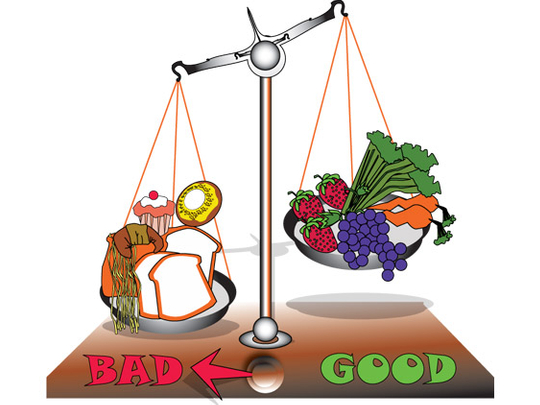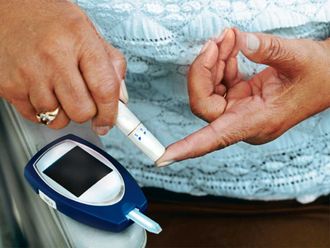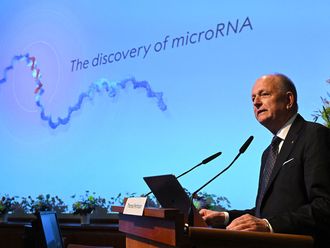
A balanced meal consists of carbohydrates, proteins, fibre and healthy fats. Despite this being common knowledge for many people, misunderstanding carbohydrates can pose a problem when it comes to achieving a healthy diet and lifestyle, say nutritionists.
"Your fruits and vegetables are actually classified as carbohydrates and these should make up a minimum of 60 per cent of your meal," says Kay Vosloo, nutritionist at Synergy, who also specialises in diabetes risk assessment and herbalism, among other areas. "People get confused and think that bread, pasta, potatoes and rice are the only carbs."
Carbohydrates are split into two groups — complex carbs and simple carbs. The first have not been altered from their original state or processed too much, meaning the fibre content is unchanged. "Complex carbohydrates are derived from wheat, brown rice, wild rice with the husk, barley and whole grains, which include wholewheat flour, wholegrain cereals, bulgur, oatmeal and whole cornmeal," says Dr Fiji Anthony, chief nutritionist at NMC Specialty Hospital Dubai.
"Simple carbs have lost their fibre because they are too processed or refined," says Vosloo, adding that the rule of thumb should be to stay away from white, processed foods such as white bread, refined grains, cereals and rice. Simple carbs are quickly broken down and converted into glucose, resulting in a sudden spike in your blood sugar levels — something you should avoid.
"We need complex carbs to allow for slow and sustained energy release," says Vosloo. "These are also where we get our essential vitamins, minerals, antioxidants and fibre from, without which we would end up suffering from a host of nutritional deficiencies, digestive disorders and possible degenerative diseases."
The superfood era
"The 90s were all about low-fat diets but now, unfortunately, we're in an era where everyone is obsessing about carbs," says Ahmed Zohier Al Hasan, MSC Nutritionist, Dietary Consultation and Programme, Organic Foods and Café. "We are slowly moving towards a new era, though — the superfood era."
Superfoods are extremely nutritious and play a key role in anti-ageing, he says. They're considered complex carbohydrates. "It may be hard for the avid dieter to change their thinking about carbs, but the physical change that can be seen is significant when they start eating good carbs that have a lot of essential fatty acids in them," explains Al Hasan.
"For example, a buckwheat pesto pasta salad for lunch followed by a small handful of nuts in the afternoon will give anyone the energy they need to get through the day, clearer skin and a good conscience knowing they aren't denying their body the vitamins it requires."
In order to stabilise your energy and blood sugar levels, you should eat about five or six times a day, advises Vosloo, who also recommends eating five types of vegetables a day. "It's best to keep your fruit for your middle meals or snacks between breakfast, lunch and dinner," she says. "This is because some fruits have a fast-fermenting rate and should be eaten alone."
Eating a small meal every two to three hours helps keep your metabolism constant. "You have to think of your stomach being the size of your fist. You don't want to overload your stomach, otherwise it cannot do the important job of mixing, churning and digesting food," says Vosloo. "The transit time in the stomach is about two hours on average for a balanced meal, hence the need to eat small, fist-sized meals every two to three hours."
"Make snacks work for you by choosing nutrient-rich foods. There is a place for snacks in a healthy eating plan — just choose wisely," says Dr Anthony. Snacks should be considered mini-meals and shouldn't include unhealthy foods such as crisps or chocolates.
"Keep portion control in mind. Have a single-serve container of yoghurt or put a small serving of nuts in a bowl. Eating directly from a multiple-serving package can lead to overeating," she says.
Lactose intolerance
Cow's milk is rich in protein and calcium, but drinking it is not necessarily healthy, especially for adults. "Humans have an enzyme called lactase, which is needed to break down the milk sugar called lactose," says Vosloo. "But this enzyme is no longer produced by our bodies once our mothers stop breastfeeding us and > the older we get. This is why most people are lactose intolerant."
"There are lots of other food items available that are rich in calcium, such as broccoli, for example," says Dr Anthony. "Consume laban or [sugar-free] yoghurt instead of cow's milk. These are good for digestion and assimilation."
Al Hasan recommends people who do drink cow's milk to consider how they feel afterwards. "If you feel bloated, break out in spots, or feel exceptionally tired after consuming a milk-based product it could be that you have an allergy or intolerance to milk."
Go organic
Regular milk drinkers should go organic, says Al Hasan. "Times have changed and unfortunately much of today's milk comes from cows that have been pumped full of hormones and antibiotics, and these are finding their way into our milk. So, to play it safe, use organic milk. It is especially recommended for children."
The low-down on carbohydrates
Complex carbohydrates include spinach, whole barley, grapefruit, turnip greens, buckwheat, apples, lettuce, buckwheat bread, prunes, watercress, oat bran bread, apricots, dried zucchini, oatmeal, pears, asparagus, oat bran cereal, plums, artichokes, museli, strawberries, okra, wild rice, oranges, cabbage, brown rice, yams, celery, multigrain bread, carrots, cucumbers, pinto beans, potatoes, dill pickles, low-fat yoghurt, soybeans, radishes, skimmed milk, lentils, broccoli, navy beans, garbanzo beans, Brussel sprouts, cauliflower, kidney beans, eggplant, soy milk, lentils, onions, split peas, wholemeal spelt bread and tomatoes.
Simple carbohydrates include sugar, corn syrup, cake, bread made with white flour, pasta made with white flour, sodas, candy, all baked goods made with white flour, most packaged cereals, honey, milk, chocolate, jam and biscuits.
Nutrition for children
It's very important to encourage your children to develop healthy eating habits. By the age of two or three they will have developed their own likes and dislikes, so it's vital to make sure they have a balanced diet. Once they're at school they will be burning a lot of energy and need foods that help them concentrate in class. Foods rich in calcium, such as milk, cheese and nuts, are needed for healthy bones, and foods rich in iron, such as red meat, fish and pulses, are needed for healthy blood. The absorption of iron can be helped by vitamin C, found in citrus fruit, tomatoes and potatoes. Vitamin A, needed for healthy skin and vision, is found in milk, green vegetables and carrots. Take care not to include too much salt in your child's diet and limit sugary drinks as they are high in calories but low in nutritional value. Try to encourage youngsters to drink water in between meals, serving juices at meal times.












